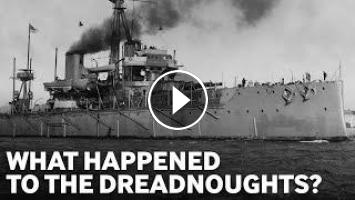On the 5 August 1914, Winston Churchill, First Lord of the Admiralty, sent a wireless message to all Royal Navy ships that read ‘War, Germany, Act’. Both the German and British fleets by this point in time had over a dozen dreadnought battleships each. The world was about to see the two largest navies in the world go head to head. But the dreadnoughts only saw action in a major battle once during World War One - at the Battle of Jutland, two years into the war. So what happened to the great naval battles of the First World War? How was it that the merchant ships came to play the pivotal role?
Explore and licence the archive films used in this video on the IWM Film website: https://film.iwmcollections.org.uk/mycollections/index/_7O8eRlm2
CREDITS:
First and second battleship squadrons and small cruisers of the German Navy, in Kiel Harbor, Germany, circa 1911-14 © National Archives at College Park
Explore and licence the archive films used in this video on the IWM Film website: https://film.iwmcollections.org.uk/mycollections/index/_7O8eRlm2
CREDITS:
First and second battleship squadrons and small cruisers of the German Navy, in Kiel Harbor, Germany, circa 1911-14 © National Archives at College Park
- Catégories
- E commerce Divers
- Mots-clés
- World War One, dreadnoughts, merchant ships















Commentaires